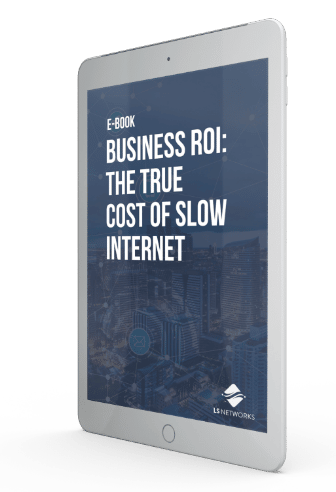The Internet enables a countless number of businesses to perform their daily operations, from communicating internally and executing marketing campaigns, to fulfilling orders and much more. Although many small businesses have realized the benefits of fiber Internet, many organizations are still stuck with broadband Internet on copper cable. Understandably, it’s important for business leaders to understand the financial breakdown of your Internet options—namely, broadband Internet on copper cable or fiber-optic Internet connectivity.
So what is your cable connection actually costing your business?
The Average Monthly Cost of Cable
First, let’s review what exactly broadband and cable Internet are. Put simply, broadband is a very common form of Internet access with two primary types of broadband technology: DSL and cable Internet. Cable Internet is typically faster than DSL Internet and uses the infrastructure of a cable television network to provide Internet services using the same coaxial cable network. The cable Internet provides Internet access for the end-user through the Internet Service Provider (ISP), which sends a data signal through the coaxial cable into the modem at your office. The modem then uses an Ethernet cable to give you access to high-speed Internet. However, download speeds depend on the quality of the cable infrastructure, which can vary.
Since so many cable companies obscure the true cost of cable behind pesky fees and upsold service bundles, it can be difficult to understand how much you’re paying for what you really need. So when you see a “$99/month” offer and think that is a decent price, that number typically doesn’t cover those extra fees. But typically, the most basic level of high-speed internet starts around $50-$70/month and reaches upwards of $349.99/month—and that doesn’t include taxes, fees, or equipment charges.
In addition to these costs and charges, there are soft costs to consider as well when it comes to broadband Internet on copper cable. With traditional cable, data is transmitted via electricity using coaxial cables. Inside each cable is an insulated copper core that is susceptible to extreme weather as well as electromagnetic interference, which unfortunately often leads to a slow and unreliable network. Since so many business processes require the Internet, this can impact your employees’ productivity, whether it’s because they have trouble downloading and uploading files, using point-of-sale systems, meeting virtually with new clients, or completing another daily task.
So when it comes to determining the soft costs of cable, follow this simple calculation:
Average hourly employee pay x Number of employees x Average downtime a day = Cost of cable downtime a day
For example, let’s say the average employee pay is $30/day and your slow cable Internet causes your team 30 minutes of downtime a day. Now let’s say you have 15 employees—that means your slow Internet is costing you a minimum of $450/day! And doesn’t even count the cost of the stress caused on relationships with customers, vendors and employees. While these may not have a definitive dollar amount associated with them on paper, they are significant costs to your business.
A Reliable and Speedy Upgrade: Fiber Internet
Fiber internet is the upgrade to cable Internet that many small business owners are finding significantly higher returns on. That’s because fiber-optic Internet is several times faster and more reliable than even the best-performing copper cable Internet connections.
With fiber, even when there’s a surge in Internet access, there’s no change in Internet speed because, unlike cable, fiber relies on light instead of electricity to transmit data. This enables employees to quickly access data and applications stored in the cloud when they need it. In addition, fiber internet is much more reliable than broadband Internet. Fiber is much more physically stronger than copper, making it more resilient to difficult weather conditions or human and electrical interference. That’s why in today’s competitive and ever-changing landscape, many businesses are turning to a modern fiber connection as a straightforward way to future-proof your business.
Meet LS Networks
LS Networks is proud to provide lightning-fast connectivity to rural communities in the Pacific Northwest. With speeds up to 100 Gbps, our symmetrical Fiber Internet service will help support your changing business requirements so you can stay productive and competitive no matter the circumstances.
Interested? Let’s start a conversation about your business needs today.






